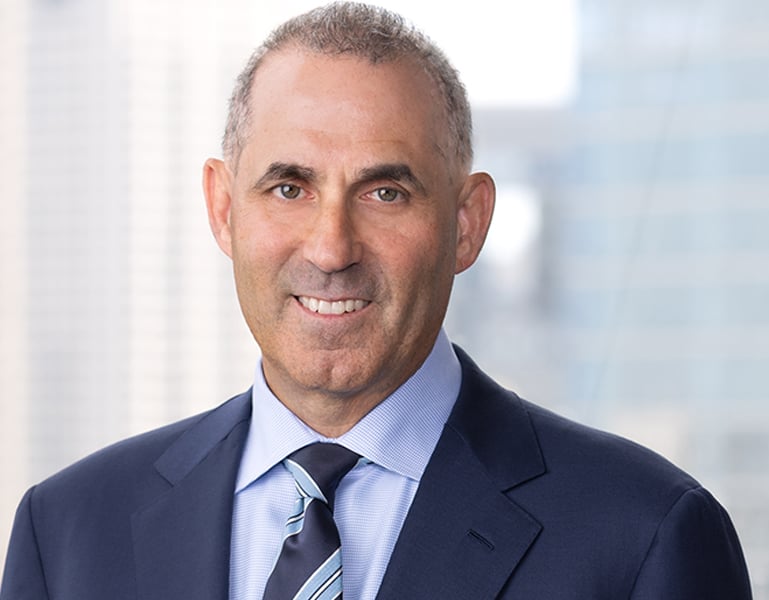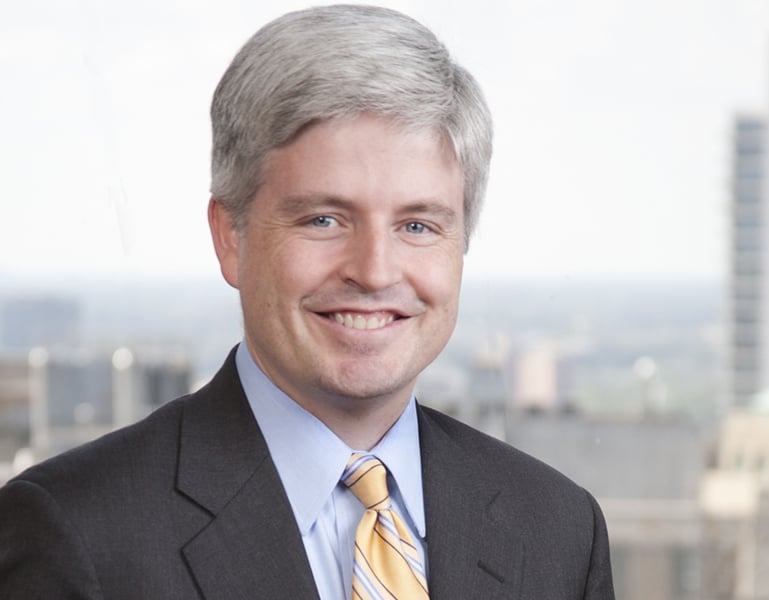SBA Issues PPP Loan Forgiveness Application
On May 15, 2020, the Small Business Administration (the “SBA”) issued the form of application (the “Application”), a copy of which can be found by clicking here, that borrowers will be required to submit when seeking loan forgiveness under the Paycheck Protection Program (“PPP”). Although the Application does not answer all of the relevant questions regarding loan forgiveness, it clarifies a number of critical points. A summary of these provisions are provided below. Please note, however, that (a) the SBA intends to issue additional guidance on loan forgiveness in the form of an Interim Final Rule, and (b) Congress is considering additional changes to the PPP affecting loan forgiveness. As a result, the details of potential loan forgiveness are likely to change.
Click here to download the guide.
| Question | Clarification |
| When does the 8 week period begin for determining “payroll costs”? | The 8 week period for determining eligible payroll costs begins, at a qualifying borrower’s election, either on (i) the date the PPP loan is disbursed (“Covered Period”) or (ii) the first day of the borrower’s first payroll period following the day of the PPP loan disbursement (the “Alternative Period”). The SBA has provided certain borrowers with administrative flexibility to ensure covered payroll costs are eligible for loan forgiveness. Specifically, the Application provides that “[b]orrowers with a biweekly (or more frequent) payroll schedule may elect to calculate eligible payroll costs using the eight-week (56 day) period that begins on the first day of their first pay period following their PPP loan disbursement.” As an example, the SBA indicated that if the borrower received its PPP loan proceeds on Monday, April 20, and the first day of its first pay period following its PPP loan disbursement was Sunday, April 26, the first day of the Alternative Period was April 26 and the last day of the Alternative Period would be Saturday, June 20. This Alternative Period option, according to the Application, is not available for borrowers with a semi-monthly or monthly payroll schedule. |
| When are payroll costs deemed to have been “incurred” and “paid”? | Pursuant to the CARES Act, a borrower is eligible for an amount of forgiveness equal to amounts “incurred and payments made” on covered costs (payroll costs, rent, utilities, etc.) during the 8 week period after the PPP loan disbursement. This statutory provision, however, does not explain when a payment or obligation is deemed to be “incurred” under the PPP. The SBA has clarified that payroll costs are deemed to be “incurred” on the date that the employee’s pay is earned. Payroll costs are deemed to be “paid” on the day that paychecks are distributed or the borrower originates an Automated Clearing House (ACH) credit transaction. To ensure that a borrower is able to potentially obtain maximum forgiveness, payroll costs incurred but not paid during the borrower’s last payroll of the Covered Period or Alternative Period, as applicable, are eligible for forgiveness if paid on or before the next regular payroll date. |
| How is the limit on employee cash compensation in excess of $100,000 calculated? | Under the CARES Act, payroll costs exclude the amount of an employee’s compensation in excess of an annual salary of $100,000, as prorated for the applicable period. The SBA previously determined that this $100,000 limitation “applies only to cash compensation, not to non-cash benefits” includible as payroll costs, such as health and retirement plan contributions made on behalf of employees. As set forth in the instructions to the Application, the SBA has clarified that borrowers are to cap cash compensation eligible for forgiveness at $15,385 (the 8 week equivalent of $100,000 per year) for each employee.
However, the compensation for owner-employees, self-employed individuals and general partners of businesses is limited to the lesser of $15,385 or the 8 week equivalent of their applicable compensation in 2019. The prior guidance excluding from payroll costs health and retirement plan contributions made on behalf of such individuals remains unchanged. |
| Has the SBA provided additional information on what cash compensation is included in payroll costs? | Yes. The Instructions to Schedule A to the Application define “cash compensation” to include “the sum of gross salary, gross wages, gross tips, gross commissions, paid leave (vacation, family, medical or sick leave, not including leave covered by the Families First Coronavirus Response Act), and allowances for dismissal or separation paid or incurred during the Covered Period or the [Alternative Period].” Although the Application does not specifically address bonuses or premium pay, in general, “gross wages” refers to all taxable wages, including bonuses and premium pay. As a result, absent further guidance to the contrary, premium pay and bonuses appear to be a permissible use of PPP loan proceeds and, thus, eligible for loan forgiveness, subject to the limitation on cash compensation in excess of $100,000 on an annualized basis as discussed above. |
| Has the SBA provided additional information on the non-cash components of payroll costs? | Yes. The Instructions to Schedule A to the Application confirm that the following costs are considered eligible payroll costs:
|
| Has the SBA provided clarity on whether covered mortgage obligations and covered rent obligations include mortgages and leases relating to personal property? | Yes. Pursuant to the CARES Act and the existing guidance issued by the SBA, the following costs are “permissible” uses of PPP loan proceeds: (i) payroll costs; (ii) covered mortgage obligations interest only) incurred before February 15, 2020; (iii) covered rent obligations under leases dated before February 15, 2020; (iv) utility payments under service agreements dated before February 15, 2020; and (v) interest on any other debt obligations that were incurred before February 15, 2020. Only the costs set forth in items (i)–(iv) are subject to loan forgiveness. The costs set forth in items (ii)–(iv) are referred to as the “eligible non-payroll costs”.
The Application clarifies that, in addition to real property obligations, borrowers may use PPP loan proceeds to pay interest on mortgage obligations, as well as rent and lease obligations relating to personal property, and such costs are subject to loan forgiveness. We note that borrowers are still required to use at least 75% of the PPP loan proceeds on eligible payroll costs and up to 25% on eligible non-payroll costs, including covered mortgage and rent obligations, to be eligible for maximum loan full forgiveness. |
| What happens if a borrower’s eligible non-payroll costs are incurred during the Covered Period, but are required to be paid after the Covered Period ends? | Similar to the SBA’s treatment of payroll costs, eligible non-payroll costs that are either paid during the Covered Period or “incurred” during the Covered Period and paid on or before the next regular billing date, even if the billing date is after the Covered Period, are eligible for loan forgiveness. Please note, however, that the relevant period for determining eligible non-payroll costs is the Covered Period, as the Alternative Period only applies to determining payroll costs. Meaning, qualifying non-payroll costs must be paid or incurred within 8 weeks of loan disbursement to be eligible for forgiveness. |
| How are FTEs calculated for purposes of the FTE headcount reduction calculation? |
The Application clarifies that average full-time equivalent (“FTE”) employee headcount during the Covered Period or the Alternative Period, is calculated as follows:
|
| What if a borrower’s employees refused to return to work, resigned or were terminated? Are they still to be counted in the FTE employee headcount reduction calculation? | No. The Application makes clear that a borrower may exclude the following employees for purposes of the FTE reduction calculation:
Any FTE reductions in these cases do not reduce the borrower’s loan forgiveness. |
| What type of payroll and eligible non-payroll documentation is a borrower required to submit with its Application? | The types of payroll documentation that a borrower is required to submit with its Application are listed below.
In addition, a borrower will be required to submit with its Application the following documentation for all eligible non-payroll costs.
|
| What types of FTE documentation is a borrower required to submit with its Application? | Borrowers’ Applications must include documentation evidencing the average number of FTE employees on payroll per month employed by the borrower for one of the following periods, as determined by the borrower: (i) February 15, 2019 to June 30, 2019 or (ii) January 1, 2020 to February 29, 2020.
In the case of a seasonal employer, the borrower must submit documentation evidencing the average number of FTE employees on payroll per month employed by the borrower for one of the following periods, as determined by the borrower: (i) February 15, 2019 to June 30, 2019; (ii) January 1, 2020 to February 29, 2020; or (iii) any consecutive 12 week period between May 1, 2019 and September 15, 2019. The Application provides that such documentation may include payroll tax filings reported, or that will be reported, to the IRS (typically, Form 941) and state quarterly business and individual employee wage reporting and unemployment insurance tax filings reported, or that will be reported, to the relevant state. |
| What type of documentation is the borrower required to retain, but which is not required to be submitted with its Application? | For six years after the date the PPP loan is forgiven or repaid in full, borrowers are required to retain the below documentation.
|
| Is there any clarification regarding audits of borrowers who obtained a PPP loan in an amount in excess of $2 million? | No. If a borrower, along with all of its affiliates, received a PPP loan in excess of $2 million, the borrower is required to acknowledge the fact in a check-the-box manner. At this time, the SBA has issued no guidance that outlines how it will “audit” relevant borrowers. |
| Is the borrower required to make any new or additional certifications in submitting the Application? | Yes. The borrower is required to make a variety of certifications in submitting the Application, including but not limited to the following:
|
Vedder Thinking | Articles SBA Issues PPP Loan Forgiveness Application
Article
May 19, 2020
On May 15, 2020, the Small Business Administration (the “SBA”) issued the form of application (the “Application”), a copy of which can be found by clicking here, that borrowers will be required to submit when seeking loan forgiveness under the Paycheck Protection Program (“PPP”). Although the Application does not answer all of the relevant questions regarding loan forgiveness, it clarifies a number of critical points. A summary of these provisions are provided below. Please note, however, that (a) the SBA intends to issue additional guidance on loan forgiveness in the form of an Interim Final Rule, and (b) Congress is considering additional changes to the PPP affecting loan forgiveness. As a result, the details of potential loan forgiveness are likely to change.
Click here to download the guide.
| Question | Clarification |
| When does the 8 week period begin for determining “payroll costs”? | The 8 week period for determining eligible payroll costs begins, at a qualifying borrower’s election, either on (i) the date the PPP loan is disbursed (“Covered Period”) or (ii) the first day of the borrower’s first payroll period following the day of the PPP loan disbursement (the “Alternative Period”). The SBA has provided certain borrowers with administrative flexibility to ensure covered payroll costs are eligible for loan forgiveness. Specifically, the Application provides that “[b]orrowers with a biweekly (or more frequent) payroll schedule may elect to calculate eligible payroll costs using the eight-week (56 day) period that begins on the first day of their first pay period following their PPP loan disbursement.” As an example, the SBA indicated that if the borrower received its PPP loan proceeds on Monday, April 20, and the first day of its first pay period following its PPP loan disbursement was Sunday, April 26, the first day of the Alternative Period was April 26 and the last day of the Alternative Period would be Saturday, June 20. This Alternative Period option, according to the Application, is not available for borrowers with a semi-monthly or monthly payroll schedule. |
| When are payroll costs deemed to have been “incurred” and “paid”? | Pursuant to the CARES Act, a borrower is eligible for an amount of forgiveness equal to amounts “incurred and payments made” on covered costs (payroll costs, rent, utilities, etc.) during the 8 week period after the PPP loan disbursement. This statutory provision, however, does not explain when a payment or obligation is deemed to be “incurred” under the PPP. The SBA has clarified that payroll costs are deemed to be “incurred” on the date that the employee’s pay is earned. Payroll costs are deemed to be “paid” on the day that paychecks are distributed or the borrower originates an Automated Clearing House (ACH) credit transaction. To ensure that a borrower is able to potentially obtain maximum forgiveness, payroll costs incurred but not paid during the borrower’s last payroll of the Covered Period or Alternative Period, as applicable, are eligible for forgiveness if paid on or before the next regular payroll date. |
| How is the limit on employee cash compensation in excess of $100,000 calculated? | Under the CARES Act, payroll costs exclude the amount of an employee’s compensation in excess of an annual salary of $100,000, as prorated for the applicable period. The SBA previously determined that this $100,000 limitation “applies only to cash compensation, not to non-cash benefits” includible as payroll costs, such as health and retirement plan contributions made on behalf of employees. As set forth in the instructions to the Application, the SBA has clarified that borrowers are to cap cash compensation eligible for forgiveness at $15,385 (the 8 week equivalent of $100,000 per year) for each employee.
However, the compensation for owner-employees, self-employed individuals and general partners of businesses is limited to the lesser of $15,385 or the 8 week equivalent of their applicable compensation in 2019. The prior guidance excluding from payroll costs health and retirement plan contributions made on behalf of such individuals remains unchanged. |
| Has the SBA provided additional information on what cash compensation is included in payroll costs? | Yes. The Instructions to Schedule A to the Application define “cash compensation” to include “the sum of gross salary, gross wages, gross tips, gross commissions, paid leave (vacation, family, medical or sick leave, not including leave covered by the Families First Coronavirus Response Act), and allowances for dismissal or separation paid or incurred during the Covered Period or the [Alternative Period].” Although the Application does not specifically address bonuses or premium pay, in general, “gross wages” refers to all taxable wages, including bonuses and premium pay. As a result, absent further guidance to the contrary, premium pay and bonuses appear to be a permissible use of PPP loan proceeds and, thus, eligible for loan forgiveness, subject to the limitation on cash compensation in excess of $100,000 on an annualized basis as discussed above. |
| Has the SBA provided additional information on the non-cash components of payroll costs? | Yes. The Instructions to Schedule A to the Application confirm that the following costs are considered eligible payroll costs:
|
| Has the SBA provided clarity on whether covered mortgage obligations and covered rent obligations include mortgages and leases relating to personal property? | Yes. Pursuant to the CARES Act and the existing guidance issued by the SBA, the following costs are “permissible” uses of PPP loan proceeds: (i) payroll costs; (ii) covered mortgage obligations interest only) incurred before February 15, 2020; (iii) covered rent obligations under leases dated before February 15, 2020; (iv) utility payments under service agreements dated before February 15, 2020; and (v) interest on any other debt obligations that were incurred before February 15, 2020. Only the costs set forth in items (i)–(iv) are subject to loan forgiveness. The costs set forth in items (ii)–(iv) are referred to as the “eligible non-payroll costs”.
The Application clarifies that, in addition to real property obligations, borrowers may use PPP loan proceeds to pay interest on mortgage obligations, as well as rent and lease obligations relating to personal property, and such costs are subject to loan forgiveness. We note that borrowers are still required to use at least 75% of the PPP loan proceeds on eligible payroll costs and up to 25% on eligible non-payroll costs, including covered mortgage and rent obligations, to be eligible for maximum loan full forgiveness. |
| What happens if a borrower’s eligible non-payroll costs are incurred during the Covered Period, but are required to be paid after the Covered Period ends? | Similar to the SBA’s treatment of payroll costs, eligible non-payroll costs that are either paid during the Covered Period or “incurred” during the Covered Period and paid on or before the next regular billing date, even if the billing date is after the Covered Period, are eligible for loan forgiveness. Please note, however, that the relevant period for determining eligible non-payroll costs is the Covered Period, as the Alternative Period only applies to determining payroll costs. Meaning, qualifying non-payroll costs must be paid or incurred within 8 weeks of loan disbursement to be eligible for forgiveness. |
| How are FTEs calculated for purposes of the FTE headcount reduction calculation? |
The Application clarifies that average full-time equivalent (“FTE”) employee headcount during the Covered Period or the Alternative Period, is calculated as follows:
|
| What if a borrower’s employees refused to return to work, resigned or were terminated? Are they still to be counted in the FTE employee headcount reduction calculation? | No. The Application makes clear that a borrower may exclude the following employees for purposes of the FTE reduction calculation:
Any FTE reductions in these cases do not reduce the borrower’s loan forgiveness. |
| What type of payroll and eligible non-payroll documentation is a borrower required to submit with its Application? | The types of payroll documentation that a borrower is required to submit with its Application are listed below.
In addition, a borrower will be required to submit with its Application the following documentation for all eligible non-payroll costs.
|
| What types of FTE documentation is a borrower required to submit with its Application? | Borrowers’ Applications must include documentation evidencing the average number of FTE employees on payroll per month employed by the borrower for one of the following periods, as determined by the borrower: (i) February 15, 2019 to June 30, 2019 or (ii) January 1, 2020 to February 29, 2020.
In the case of a seasonal employer, the borrower must submit documentation evidencing the average number of FTE employees on payroll per month employed by the borrower for one of the following periods, as determined by the borrower: (i) February 15, 2019 to June 30, 2019; (ii) January 1, 2020 to February 29, 2020; or (iii) any consecutive 12 week period between May 1, 2019 and September 15, 2019. The Application provides that such documentation may include payroll tax filings reported, or that will be reported, to the IRS (typically, Form 941) and state quarterly business and individual employee wage reporting and unemployment insurance tax filings reported, or that will be reported, to the relevant state. |
| What type of documentation is the borrower required to retain, but which is not required to be submitted with its Application? | For six years after the date the PPP loan is forgiven or repaid in full, borrowers are required to retain the below documentation.
|
| Is there any clarification regarding audits of borrowers who obtained a PPP loan in an amount in excess of $2 million? | No. If a borrower, along with all of its affiliates, received a PPP loan in excess of $2 million, the borrower is required to acknowledge the fact in a check-the-box manner. At this time, the SBA has issued no guidance that outlines how it will “audit” relevant borrowers. |
| Is the borrower required to make any new or additional certifications in submitting the Application? | Yes. The borrower is required to make a variety of certifications in submitting the Application, including but not limited to the following:
|



